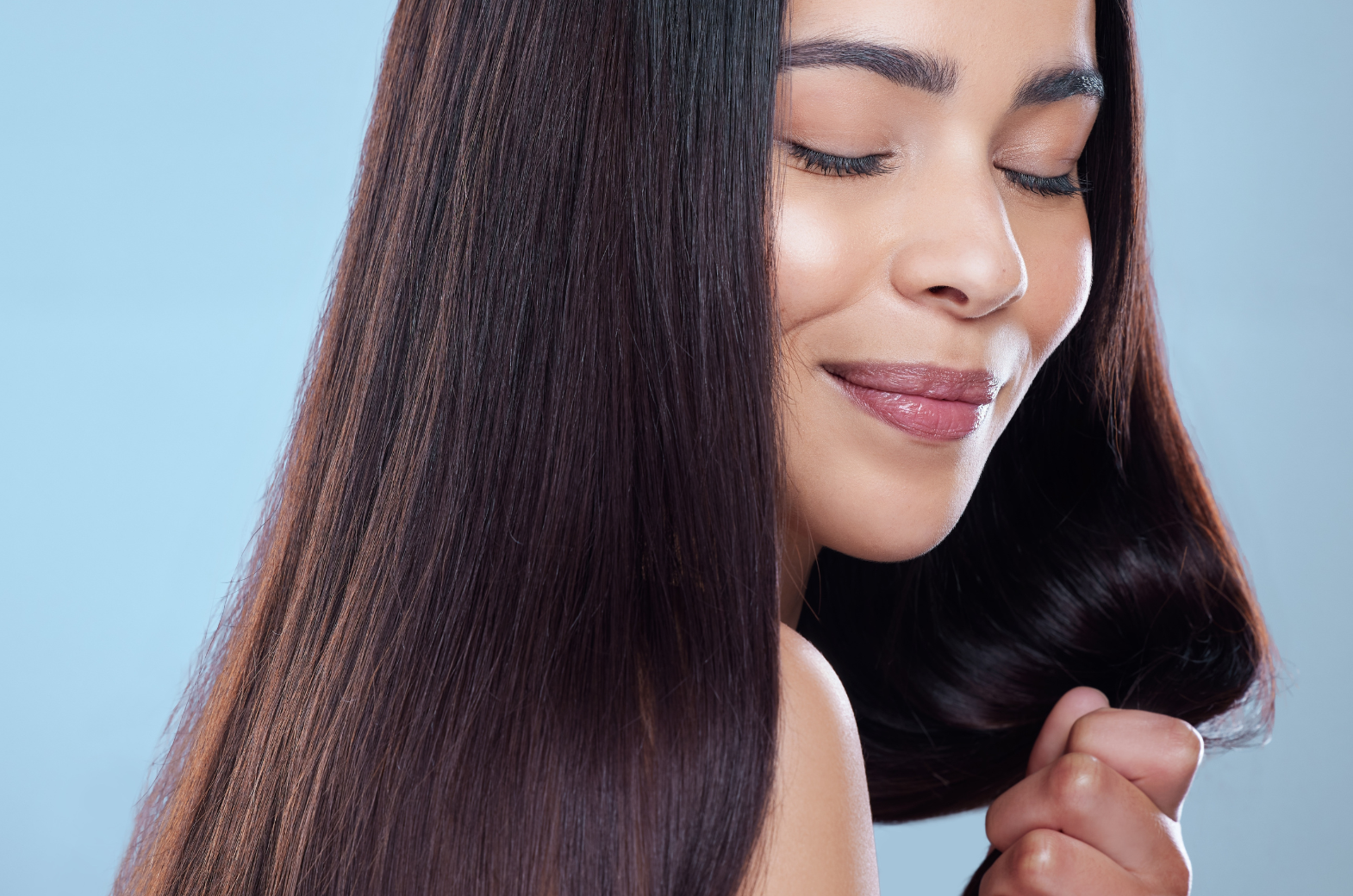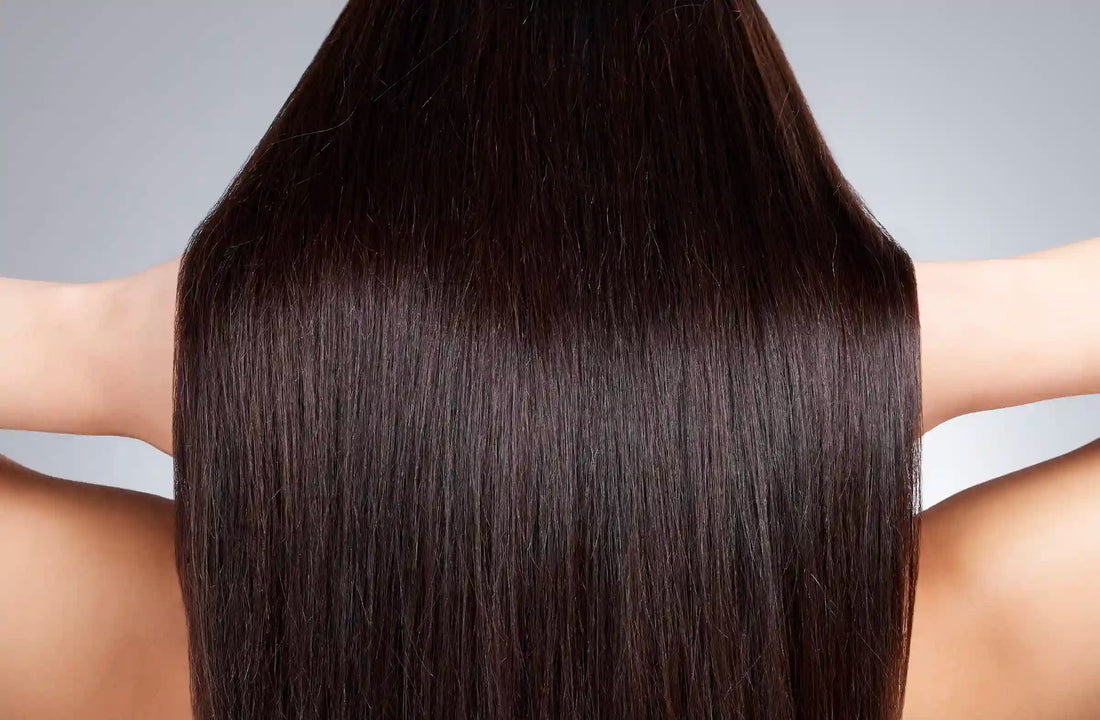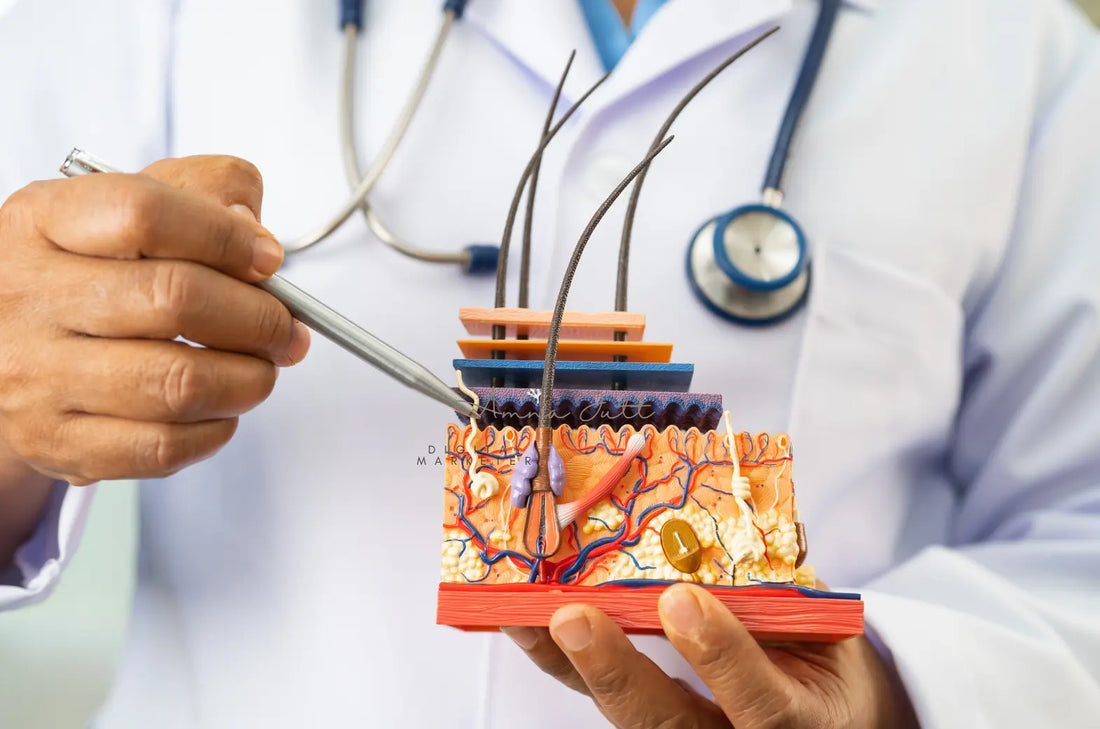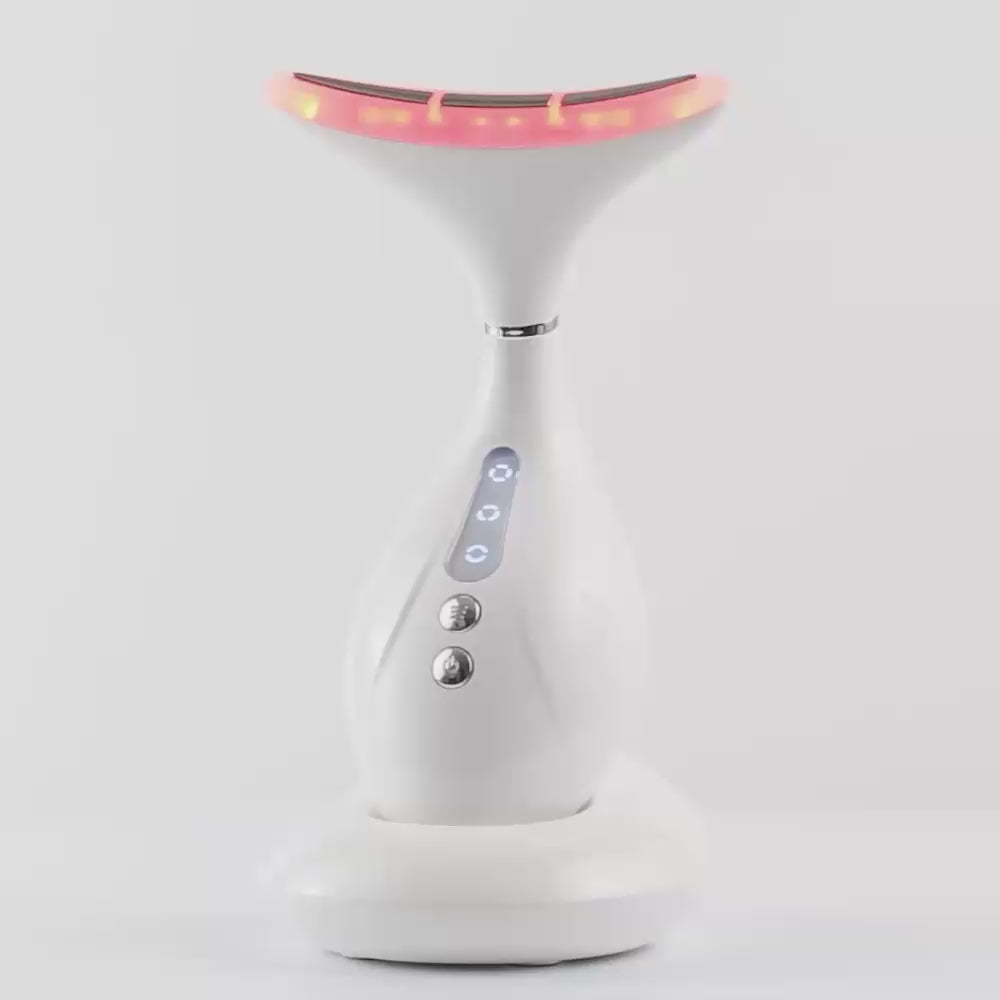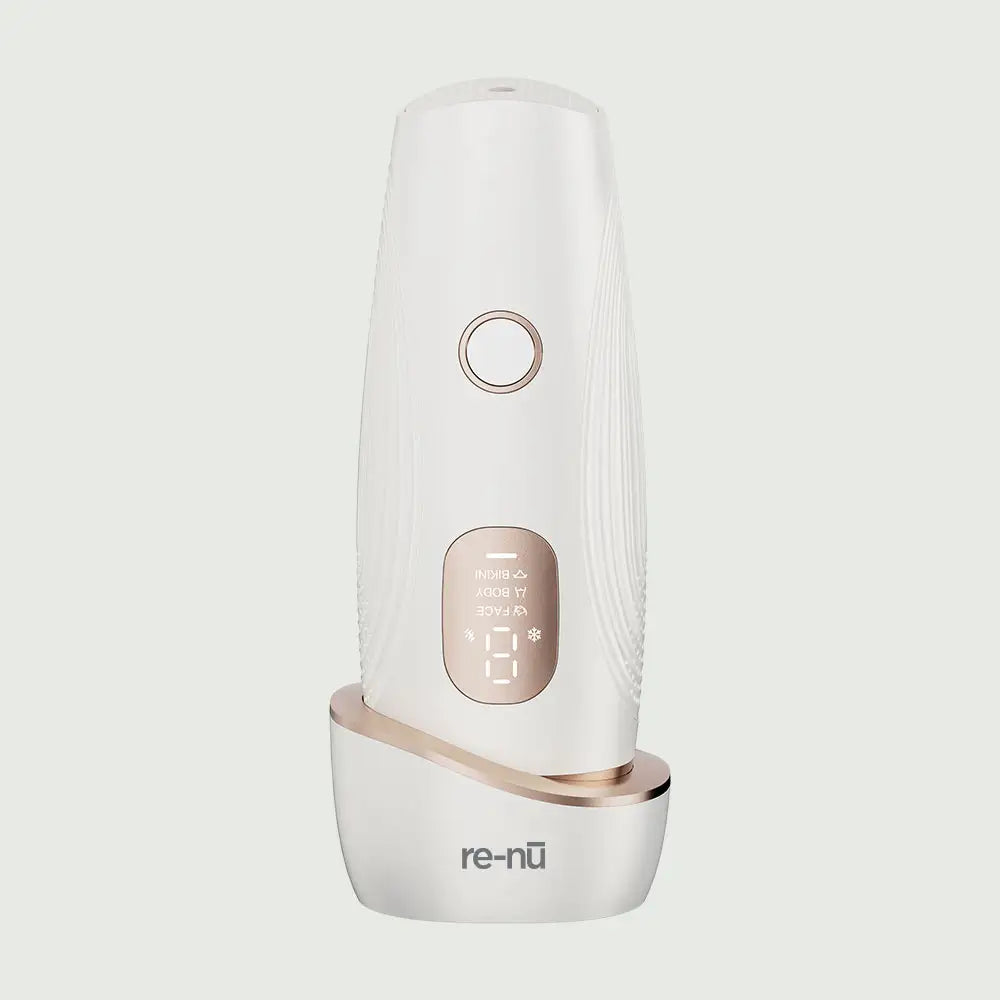Hair loss is a common concern affecting millions of women worldwide, often leading to emotional distress, diminished confidence, and frustration over ineffective treatments. Whether it's postpartum shedding, hormonal imbalance, age-related thinning, or stress-induced alopecia, the impact of losing hair runs deeper than just aesthetics; it touches self-esteem and quality of life.
In an era where wellness and beauty tech are booming, laser hair brushes and red light therapy for hair growth have emerged as cutting-edge, non-invasive solutions promising real results without drugs or side effects. You've likely seen these sleek LED brushes trending across social media or popping up in dermatologists’ recommendations, but the big question remains: Do laser hair brushes work? In this science-backed, deeply researched explainer, we’ll break down:
How do laser and LED hair brushes stimulate hair follicles?
What clinical studies say about red light therapy for hair regrowth?
The real-world benefits the users' experience?
What to expect (and what not to) from these devices?>
How to use them effectively for optimal results?
Whether you're exploring your first at-home hair regrowth device or want to understand the technology before investing, this guide will help you separate hype from evidence and decide whether this innovative solution fits your personal hair journey.
Understanding Laser Hair Brushes: How They Work
Imagine revitalising your hair follicles without medications, painful procedures, or messy topicals, just light. That’s the promise of laser hair brushes, a new era of beauty tech designed to treat thinning hair from the root, literally. These high-tech devices combine the simplicity of a brush with the science of low-level laser therapy (LLLT), also called red light therapy, to offer a safe, non-invasive way to stimulate new hair growth at home.
At the heart of a laser hair brush is a powerful yet gentle technology: low-level laser light, which emits specific wavelengths of red or near-infrared light (typically between 630nm–670nm). This light energy doesn’t just sit on the surface of the scalp; it penetrates through skin tissue, reaching the dermal papilla cells at the base of the hair follicles, where hair growth begins.
Once absorbed, this light energy sparks a biological chain reaction known as photobiomodulation. Here's what happens next:
Increased ATP production: Cells generate more adenosine triphosphate (ATP), the energy source needed for cell repair and growth.
Enhanced blood circulation: The laser light stimulates microcirculation, delivering more oxygen and nutrients to each hair follicle.
Anti-inflammatory effects: Red light reduces inflammation around follicles, helping to reverse miniaturization (a key issue in hair loss).
Activation of dormant follicles: Most importantly, it helps “wake up” resting follicles, nudging them back into the active growth (anagen) phase of the hair cycle.
This combination of effects doesn't just slow hair thinning it helps promote new, thicker, healthier hair growth over time. And because the process is drug-free, painless, and FDA-cleared for safety in many devices, it’s quickly becoming a go-to choice for women seeking a more natural solution to hair loss. While the idea of using light to grow hair may seem futuristic, the science is very real and increasingly supported by clinical research, which we’ll explore in the next section.

The Science of LLLT (Low-Level Laser Therapy)
At first glance, it might seem too simple. Can shining light on your scalp make your hair grow? But behind this light-based method lies a fascinating body of research in cellular biology and dermatology. The mechanism is rooted in a therapeutic technique known as photobiomodulation, a fancy term for using specific wavelengths of light to alter biological processes at the cellular level. And the results are not just theoretical; they’re being observed in labs, clinics, and increasingly, at home.
The magic number in most red light therapy devices is a wavelength between 630 to 670 nanometers, which falls in the red to near-infrared spectrum. When this light penetrates the scalp, it reaches the mitochondria, the tiny powerhouses inside each cell. Think of mitochondria as mini batteries: they respond to red light by producing more energy in the form of ATP (adenosine triphosphate). This boost of energy powers the cells responsible for repairing tissue and growing hair.
Here’s a breakdown of how this process supports hair growth:
Photobiomodulation
Red light wavelengths stimulate mitochondrial activity, energizing hair follicle cells and promoting healthier function. It’s like flipping a biological “on” switch that tells dormant hair follicles to reactivate and grow.
Increased Blood Flow to the Scalp
LLLT doesn’t just target the cells it also triggers vasodilation, widening blood vessels and improving circulation. This means more oxygen and nutrient delivery to the hair follicles, creating the ideal environment for growth and repair.
Prolonged Anagen (Growth) Phase
Hair grows in cycles, and the anagen phase is when new strands are actively growing. One of LLLT’s key benefits is that it extends this growth phase, meaning more follicles stay active for longer, resulting in fuller, denser hair over time.
Real Clinical Evidence
Multiple studies support these claims. One randomized clinical trial published in Lasers in Surgery and Medicine found that individuals using LLLT devices experienced significant increases in hair density and thickness after just 16 weeks of regular use. Another double-blind, placebo-controlled study using the HairMax LaserComb showed increased hair count and user satisfaction in both men and women.
Red light therapy doesn’t just act as a stimulator; it creates a healthier scalp ecosystem, combats inflammation, and gives hair follicles the cellular energy they need to thrive. And when used consistently and correctly, LLLT has the potential to transform how we treat hair loss without drugs, needles, or invasive treatments.
In the next section, we’ll break down the real-life benefits of laser hair brushes and what users are reporting after weeks and months of use.
Benefits of Using a Laser Hair Brush
If you’ve ever stood in front of the mirror wondering where your hair went or how to get it back, know this: you’re not alone, and the solution may be simpler than you think. While hair loss can feel frustrating and unpredictable, technology like laser hair brushes offers a safe, gentle, and scientifically backed way to take control. And no, it’s not just another beauty fad. When used regularly, these devices can deliver tangible improvements that go beyond what you see. They affect how your hair grows from the inside out.
Unlike topical treatments or pills, laser hair brushes work by treating the root cause literally. By energizing the hair follicles and restoring optimal scalp health, these devices support your hair's natural growth cycle and strengthen each strand at its base. Over time, the results are visible, measurable, and most importantly, achievable without invasive procedures.
Here are the top real-world benefits of using a laser hair brush:
Stimulates Dormant Hair Follicles
Many cases of hair thinning stem from follicles becoming dormant, not dead. Red light therapy helps reactivate these "sleeping" follicles, especially in areas where hair has thinned, kickstarting them back into the active growth phase.
Improves Scalp Circulation and Oxygenation
Laser light increases blood flow to the scalp, bringing a rich supply of oxygen and nutrients to the hair follicles. This enhanced circulation is key to reviving weak roots and giving your strands the energy to grow strong and healthy.
Strengthens Hair Roots and Reduces Shedding
Weakened roots lead to breakage and excessive shedding. LLLT helps fortify the follicle structure, reducing hair fall and helping you retain more of the hair you already have.
Supports Natural Hair Growth Cycle
Your hair grows in phases. LLLT works to prolong the anagen (growth) phase, ensuring more follicles are actively producing new hair at any given time, resulting in denser, fuller coverage.
Non-Invasive and Painless Treatment
No needles. No recovery. No side effects. Laser hair brushes offer a comfortable, at-home alternative to clinical treatments, making them perfect for daily use and long-term hair maintenance.
Can Be Used Alongside Other Hair Growth Products
Whether you're using hair serums, biotin supplements, or prescription treatments, laser therapy can be safely combined with other solutions to enhance their effectiveness, making it a powerful addition to your hair care routine.
Reduces Scalp Inflammation and Dandruff
A healthy scalp is essential for hair growth. LLLT has anti-inflammatory properties that calm irritated skin, reduce flakiness, and support a balanced scalp environment where new hair can thrive.
With consistency, most users begin to see visible changes within 8–16 weeks from reduced hair fall to new baby hairs sprouting in thinning areas. The key lies in regular use, proper technique, and patience.

Real-World Tools: Top Laser Hair Brushes Reviewed
Plasma Laser Hair Growth Comb
Combines laser therapy with plasma stimulation to deeply revitalize the scalp. Features dual technologies for enhanced absorption of hair serums and essential oils.
Laser Hair Growth Brush
Designed for at-home therapy, this brush uses a dense array of red light diodes to cover more scalp area efficiently.
LED Therapy Massage Comb
Combines LED red light and massage functions to improve lymphatic drainage and support hair health holistically.
Clinical Research: What Does Science Say?
Laser hair brushes aren’t just another gadget promising miraculous hair growth; they're backed by real, peer-reviewed science. Over the past two decades, researchers have increasingly explored the power of low-level laser therapy (LLLT) as a non-invasive treatment for hair thinning and androgenetic alopecia. And the findings are promising.
A pivotal 2014 study published in the American Journal of Clinical Dermatology evaluated the effects of LLLT on both men and women suffering from pattern hair loss. The study found that participants who used laser devices experienced significant improvements in hair density compared to those who received a placebo. Researchers concluded that LLLT is a “safe and effective treatment” for male and female androgenetic alopecia.
Another noteworthy investigation, a 2017 randomized, double-blind clinical trial focused specifically on laser combs. Over 26 weeks, subjects who used an LLLT comb three to four times per week saw an average 35% increase in hair count. This study emphasized the importance of consistency, noting that even minimal but regular use (10–15 minutes per session) was enough to generate visible improvements in both hair thickness and coverage.
A few other supporting studies include:
Harvard Medical School Research (2007) – Confirmed that red light stimulates hair follicle cells via increased mitochondrial activity and ATP production, promoting healthier hair growth.
Lasers in Surgery and Medicine (2013) – Found LLLT devices safe and effective for increasing hair count in women, with no reported side effects.
Journal of Cosmetic and Laser Therapy (2016) – Reported that LLLT led to better results when combined with traditional treatments like minoxidil, suggesting laser therapy may enhance other regimens.
Why the Science Matters
These clinical results aren’t just numbers; they highlight real biological mechanisms at work:
Laser light improves microcirculation, helping nutrient-rich blood reach the follicles.
It stimulates stem cells in the follicular bulge, reviving dormant follicles.
It reduces inflammation, a common contributor to follicle miniaturization and hair loss.
What stands out across nearly all studies is this: LLLT is most effective when used regularly over time. Much like fitness or skincare, the benefits build gradually. Participants in successful studies consistently used their laser brushes multiple times per week, with each session lasting 10–20 minutes.
In short, clinical research supports what many users already report anecdotally: laser hair brushes are a viable, science-backed solution for those battling hair thinning or early-stage hair loss, especially when used consistently.
How to Use a Laser Hair Brush Effectively
For best results, follow these steps:
Start with Clean, Dry Hair: Remove any styling products before use.
Power On the Device: Activate the red light/laser function.
Brush Slowly and Evenly: Glide the brush over the scalp, covering all areas.
Use for 10–15 Minutes: Focus on thinning spots or receding areas.
Repeat 3–5 Times Weekly: Consistency is crucial for results.
Bonus Tip: Use the brush in combination with hair growth serums or scalp tonics for enhanced absorption and efficacy.
Who Should Use Laser Hair Brushes?
Laser hair brushes are suitable for:
Women with thinning hair or hair loss
Individuals with hereditary alopecia
Those recovering from stress-related shedding or postpartum hair loss.
People want to boost scalp circulation
Anyone looking for a non-invasive hair regrowth tool
However, individuals with scalp infections or open wounds should avoid LLLT until healed.
Red Light Therapy vs. Other Hair Regrowth Methods
|
Method |
Pros |
Cons |
|
Red Light Therapy |
Non-invasive, pain-free |
Requires regular use |
|
Minoxidil (Topical) |
FDA-approved, widely available |
Can irritate, shedding |
|
Hair Transplant |
Permanent results |
Invasive, expensive |
|
Supplements |
Supports internal health |
Results may vary |
While each method has its place, laser hair brushes offer a unique blend of convenience, safety, and effectiveness, especially for women seeking non-drug alternatives.
FAQs
Does HairMax regrow hair?
Yes. HairMax, a pioneer in laser combs, has been FDA-cleared and clinically proven to increase hair growth in users with hereditary hair loss.
Does a laser stimulate hair growth?
Yes. Laser therapy stimulates follicles by improving blood flow and cell energy, leading to new growth over time.
Do laser hair growth caps work?
Yes. Like laser brushes, caps use LLLT technology and have shown measurable results in clinical trials. The brush allows for more targeted use.
How often should I use a laser hair comb?
Use it 3–5 times per week for 10–15 minutes per session. Consistency is key to long-term results.
Why am I growing more hair after the laser?
Because LLLT activates dormant follicles and stimulates the hair cycle, you may experience new hair growth.
Do red light hair brushes work?
Yes. Multiple studies confirm their efficacy in improving hair density, especially when used regularly.
Do any products regrow hair?
Yes. Clinically backed products like laser brushes, Minoxidil, and some supplements can promote regrowth.
How did Matthew McConaughey regrow his hair?
He reportedly used a combination of topical treatments and consistent scalp care. While he hasn't endorsed a device, red light therapy fits this approach.
What is the best laser for hair growth?
Look for FDA-cleared devices with wavelengths between 630–670 nm and multiple diodes for broad scalp coverage.
What is the number one thing for hair growth?
A combination of healthy scalp care, nutrient support, and consistent stimulation (like LLLT) delivers the best results.
Can hair grow back after thinning?
Yes. If the follicles are still alive, tools like laser brushes can reactivate them and reverse thinning.
Final Thoughts: Are Laser Hair Brushes Worth It?
If you’re serious about hair regrowth, especially as a woman facing thinning hair, laser hair brushes are a promising investment. They’re backed by science, safe for regular use, and offer a drug-free path to better hair. While not a miracle solution overnight, consistent use over weeks and months can yield measurable improvement.They also pair well with complementary approaches like serums, supplements, and scalp massage for a well-rounded hair care strategy.
Browse Recommended Devices
Looking to get started? Explore our most trusted laser hair brush options:
Plasma Laser Hair Growth CombLaser Hair Growth Brush
Stay Committed, See Results
Hair regrowth is a journey. With the right tools and a little patience, a fuller, healthier head of hair is achievable.
Tip: Set a reminder 3x a week to use your device and take progress photos monthly to stay motivated.
Explore more science-backed beauty tools at Re-nū Smart Beauty, where innovation meets self-care.
Sources
https://main.shapiromd.com/blogs/do-laser-combs-actually-work-the-science-on-laser-light-therapy
https://www.healthline.com/health/laser-treatment-for-hair-loss



